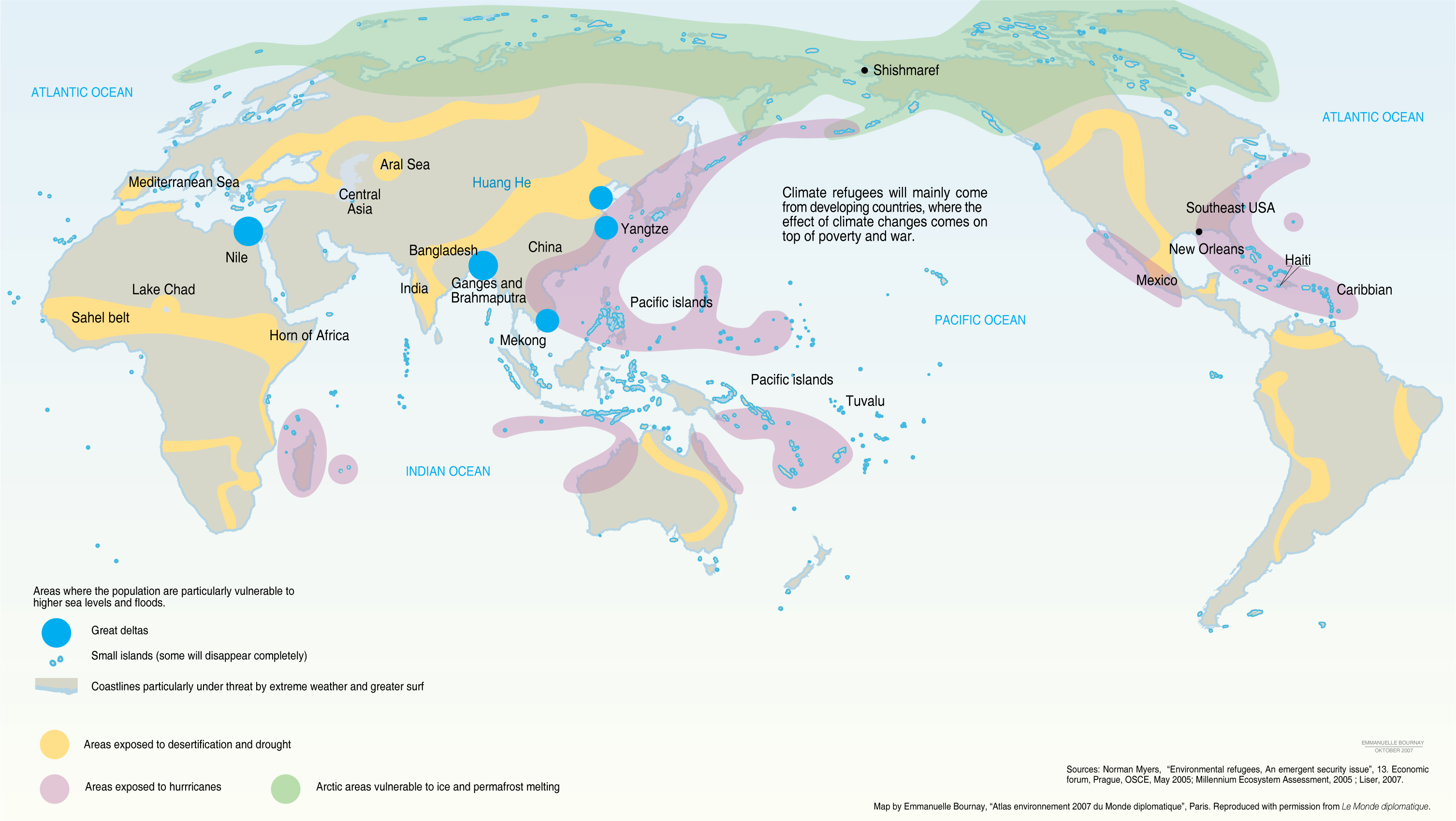I was looking for the perfect map to show the shrinking ecumene, a map showing the extension of the oceans and of the desert. I found one which was perfect. However this map was always used by some "climate-septic". I was like, "waw, all these people are reducing the subject of my blog into pieces...". After some long hours (no more than a second in fact) of self introspection i decided to keep going with this subject. You must know why these people were criticizing this map.
 |
| The perfect map |
For example, the author of one of these critics argues that the Sahelian zone had been greening from 1982 to 1999. As a proof, he points the evolution of the NDVI from an other study.
 |
| source: http://www.appinsys.com/GlobalWarming/GW_Refugees.htm |
But from an other study, i can find that the evolution of the NDVI from 1981 to 2003:
 |
| source: http://www.comap.ca/kmland/display.php?ID=298&DISPOP=VRCPR |
It seems that the evolution is not really the same. These studies must work on the average of 30 years as it is convention to define a climate. Comparing two years has no interest. From now on, this argument cannot be received. Moreover, this region has hosted huge programs to fight against desertification as the "greenwall of trees". Even if the Sahel was greening, would it mean that desertification does not exist? That it is not a threat? This map is showing
Furthermore, these septic authors argue that the populations of these areas are booming as a counterexample. Should we understand that because some populations of these areas are booming, there cannot be any refugees? Of course the population is booming as many of these regions are in developing countries.
We can easily recognize that many dramatic prevision of our future were quiet excessive. I'm thinking about the MIT which predicted the oil's end of stock for 1992, or about the "limits to growth" of 1972. But without these prediction, wouldn't we have waited until the 500£ barrel of oil to find some new oil field? Would we have imagined the sustainable development ideology?
Also, the prediction of the UNEP were not disproportionate as today the climatic refugees are estimated around 30 millions according to the Environmental Justice Foundation. As predicted the UNEP, most of the refugees are in the least developed countries where the capacity of resilience is very low.
To put it in a nutshell, I don't agree with the climate-septic nor in their intentions neither in their arguments.
Aucun commentaire:
Enregistrer un commentaire